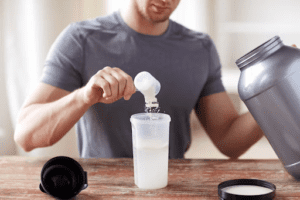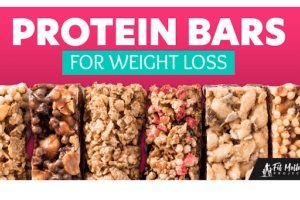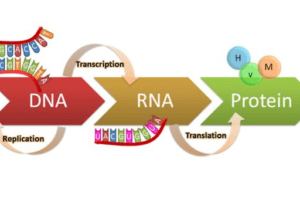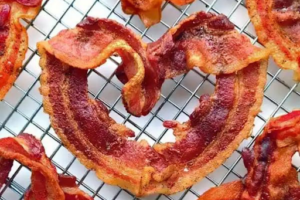Have you ever stopped to wonder what’s really in your protein powder? It goes from an unremarkable farm product to a delicious post-workout treat, but how does this transformation happen? Dive into the surprising science behind protein powder production! This article will unveil the secret journey of protein, from its humble beginnings as a plant or dairy source to the familiar powder you know and love.
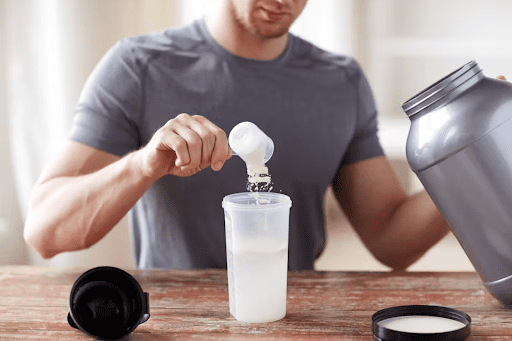
I’ll explore the fascinating methods used to separate and concentrate protein, along with the clever tricks that make it taste so good.
From Raw Material to Usable Powder
The journey of protein powder from its starting point to your shaker bottle involves a fascinating process of separation and concentration. Let’s delve into the two main approaches used for animal-based and plant-based protein sources:
Animal-based Protein Powerhouses (Whey & Casein):
Milk Matters
It all begins with milk, the foundation for both whey and casein protein powders. The milk goes through a pasteurization process, where it’s heated to eliminate harmful bacteria. This ensures a safe and stable base for further processing.
Curdling Up the Casein
Enzymes are then introduced to the milk. These act like tiny scissors, specifically targeting a protein called casein. Casein curdles, forming solid clumps that separate from the remaining liquid whey.
Whey to Go!
The whey, a yellowish liquid rich in protein, lactose (milk sugar), and minerals, is what we’re after for whey protein powder. The curdled casein solids are typically used to make cheese.
Plant-based Protein Parade (Soy, Pea, Rice):
For plant-based protein powders, the approach is a little different:
The Power of the Grind
Plant sources like soy, peas, or rice are first ground into a fine powder. This increases the surface area, making it easier to extract the protein later.
Liquid Magic
Water is then introduced to the ground plant material. This creates a slurry, where the protein and other desirable components become suspended in the liquid, while unwanted elements like fiber remain behind.
Isolation Innovation
Through various filtration and separation techniques, the protein is isolated from the unwanted components in the liquid mixture. This concentrated protein solution forms the base for plant-based protein powder.
By employing these distinct methods, manufacturers can extract and isolate the protein from its source material. The next step? Transforming this concentrated protein goodness into the familiar powder form we know and use!
From Liquid to Powder: The Art of Drying and Pulverizing
We’ve seen how the magic of extraction isolates the protein from its source material. But that protein is still in a concentrated liquid form. So, how do we get that familiar, easy-to-mix protein powder? Here’s where the drying and pulverizing stage comes in!
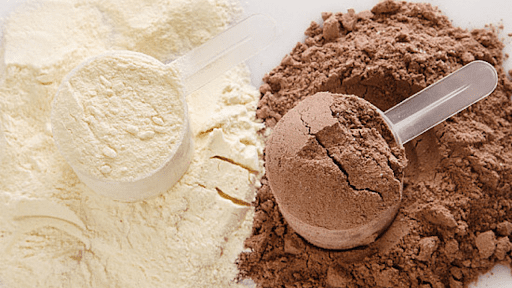
Spray Drying: A Gentle Touch
A popular method for protein powder production is called spray drying. This technique is all about transforming the liquid protein concentrate into a fine, dry powder while minimizing damage to the protein itself. Here’s how it works:
Atomization: The concentrated protein solution is pumped through a nozzle and turned into a fine mist. Imagine a high-tech watering can creating a cloud of tiny protein droplets.
Hot Air, Big Difference: This protein mist is then blasted with hot air. The hot air rapidly evaporates the water surrounding the protein droplets, leaving behind dry particles.
Rapid is Key: The key to this process is speed. The hot air dries the protein particles so quickly that they don’t have much time to denature or lose their structure. This helps ensure the protein powder retains most of its nutritional value.
The Power of Powder: Once the drying is complete, the resulting protein particles are tiny and light. These particles are then further milled and sieved to create a uniform, fine powder that mixes easily with liquids. This is the protein powder you know and love!
The Benefits of Spray Drying:
Spray drying offers several advantages for protein powder production:
Preserve Protein Integrity
The rapid drying process helps minimize heat damage to the protein, ensuring it retains its valuable properties.
Enhanced Mixability
The resulting powder is light and fine, making it easy to mix into water, milk, or your favorite smoothie base without lumps.
Longer Shelf Life: Drying removes moisture, which creates a more stable product with a longer shelf life.
By employing spray drying or similar techniques, manufacturers can transform concentrated protein liquids into the convenient and versatile protein powders we rely on to support our active lifestyles.
Whey Protein: A Cheesemaking Byproduct Turned Muscle-Building Hero
But did you know this powerhouse protein is a by-product of another delicious food – cheese?
Whey: From Cheese Curds to Protein Powerhouse
The whey protein journey begins with cheese production. When milk is curdled with enzymes or acid to separate the solids (curds) from the liquids (whey), the leftover liquid is what we call whey. This whey is rich in protein, lactose (milk sugar), minerals, and vitamins.
Whey Protein Concentrate vs. Isolate: Unveiling the Differences
Not all whey protein powders are created equal. Here’s a breakdown of the two main types:
Whey Protein Concentrate (WPC)
This is the more common and affordable option. During processing, the lactose and some fat are removed from the whey, but some of these components remain. It may also have a slightly sweeter taste due to the presence of lactose.
Whey Protein Isolate (WPI)
Additional processing steps are used to further remove lactose, fat, and other components, resulting in a higher protein content (around 90% or more). WPI is generally more expensive than WPC and may have a more neutral taste due to the lower lactose content. This also makes it a better choice for those who are lactose intolerant.
Choosing Your Whey:
If you’re looking for a cost-effective option and don’t mind some lactose, WPC might be a good choice. However, if you prioritize a higher protein content, a more neutral taste, or have lactose intolerance, WPI may be the better option.

Casein Protein: The Slow and Steady Player
Casein, another milk protein, is a worthy companion to whey. Unlike whey, which is absorbed rapidly, casein boasts a slower, sustained release of amino acids into the bloodstream. This makes it a great option for promoting muscle recovery and providing a steady supply of protein throughout the day, particularly before bed.
Plant-Powered Protein: A World Beyond Dairy
For those following a vegan or vegetarian lifestyle, or simply seeking a dairy-free alternative, plant-based protein powders offer a fantastic option. These powders are derived from various plant sources, each with its own unique amino acid profile:
Soy Protein
A complete protein source, meaning it contains all nine essential amino acids, soy protein is a popular and versatile choice. Soybeans undergo grinding, water extraction, and isolation techniques to concentrate the protein content.
Pea Protein
Hypoallergenic and easily digestible, pea protein is a rising star in the plant-based protein world. Peas are first ground into a flour, then mixed with water to create a slurry. Similar to soy protein, filtration and separation techniques isolate the protein for further processing into powder form.
Rice Protein
A gentle protein source on the digestive system, rice protein is another popular option. Brown rice is typically used, and the process involves grinding, water extraction, and isolation to concentrate the protein content.
While these are just a few examples, the world of plant-based protein powders continues to grow, offering a variety of options to suit your dietary needs and preferences.
Sweetening the Deal: Flavorings and Additives in Protein Powder
Plain protein powder can have a, well, plain taste. That’s why manufacturers often add flavorings, sweeteners, and other ingredients to make their products more palatable and appealing. Here’s a breakdown of why these extras are included:
Flavor Frenzy
Unflavored protein powder can be quite bland. Flavorings like chocolate, vanilla, or fruity concoctions add a delightful twist, making it easier to incorporate protein powder into smoothies, shakes, or even baking recipes.
Sweetener Showdown
Natural protein sources often lack sweetness. Sweeteners like stevia, sucralose, or even natural sugars like honey are added to enhance the taste and make the powder more enjoyable to consume.
Thicken Up the Mix
Some protein powders can be a bit thin and watery when mixed. Thickeners like xanthan gum or guar gum help create a creamier texture, improving the overall drinking experience.
Quality Control: A Watchful Eye
While flavorings and additives can enhance the taste and texture of protein powder, it’s important to remember quality control. Reputable manufacturers implement strict quality measures throughout the production process to ensure:
Safety First: Testing for contaminants like bacteria or heavy metals is crucial to ensure the final product is safe for consumption.
Protein Power Check: Protein content is a key selling point, so manufacturers verify the protein content through rigorous testing to ensure the label accurately reflects what’s inside.
By prioritizing quality control, manufacturers can deliver protein powders that are not only delicious but also safe and effective for your health goals.

Further Exploration of Protein Powder
The world of protein powder can be vast and intriguing. This article has shed light on the production process and the different types available, but you might still have some lingering questions. Let’s explore a few common ones:
Do I Need Protein Powder?
Protein powder can be a convenient way to boost your protein intake, especially if you struggle to get enough from whole food sources alone. However, it’s not necessarily essential for everyone. If you have a balanced diet that includes protein-rich foods like meat, fish, eggs, dairy, legumes, and nuts, you might not need additional protein powder.
Are There Any Side Effects?
Consuming excessive protein powder can potentially lead to digestive issues like bloating or gas, especially for those with sensitive stomachs. Lactose intolerance can also be a concern with whey protein concentrate.
How Much Protein Powder Should I Take?
The ideal protein intake varies depending on your age, activity level, and fitness goals. A healthcare professional or registered dietician can help you determine the appropriate amount for your individual needs. It’s important to remember that protein powder should complement a healthy diet, not replace whole foods.
Remember: Consulting with a healthcare professional before starting any new supplement regimen, including protein powder, is always a wise step.
